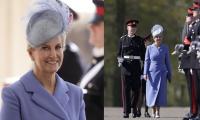The year is 2018 and the month is October. Lahore is getting chillier, bracing up for yet another Smog season. I’m getting cold feet entering the giant gates of the historic building of the Civil Services Academy (CSA) in Lahore, a symbolic edifice representing power and prestige since 1948.
The CSA is Pakistan’s premier training institution for individuals that make it to the country’s 12 service groups/cadres. The training is set in the stone age; tediously long, archaic and divorced from the contemporary issues of the 21st century. But one thing that it accomplishes exceptionally well, and perhaps even gracefully, is that it provides a closely matching simulation of the troubles one would encounter in the service. One of the ways it does this is by inviting eminent speakers, mostly seniors from the service, to advise the trainees on how they could navigate these challenges.
I was an active economist before I joined the service. Given my joint affiliation with the civil service and Pakistan’s small economics fraternity, several experts who came to the CSA that year recommended I shape my career along the lines of Ishrat Hussain’s life. It was more than a coincidence that whoever I met took his name – perhaps an emphatic tribute and a resounding reminder of the man’s services to Pakistan that his was the first name that came to everyone’s mind when they thought of a ‘Pakistani economist’ or an ‘archetype civil servant’.
Dr Ishrat may not recall this, but I had a brief call with him in 2018 when we were launching the annual report of the Burki Institute of Public Policy. Dr Ishrat had to grace the occasion as a guest speaker. As the director of the institute, I was tasked by Mr Shahid Javed Burki to ensure that he attended. He did eventually make it. This was months before I joined the civil service and he, Imran’s government as an adviser. Of all things, one that these brief encounters reinforced was that while one could wish for, becoming an Ishrat Hussain is no walk in the park.
Joining the civil service in 2018 was a big career move; my life was taking turns and so was Pakistan’s. Imran Khan had become prime minister after 22 years of arduous political struggle. His party was aspiring to change a lot of things, make widescale reform, and guess who was put in charge? Dr. Ishrat had led the National Commission of Governance Reforms (NCGR), a high-powered committee designated by the late president Musharraf to propose reforms to Pakistan’s governance structure and its civil service. Under Dr Ishrat’s leadership, the committee produced a report that is one for the times. That memory led Imran’s government to consider Dr Ishrat to lead the institutional reform task force. One of his magnum opus texts, ‘Governing the Ungovernable’ had also been released to a wide readership, re-establishing his claim over the position of the country’s chief reform adviser. Several plans were devised and proposed to Imran under Dr Ishrat’s supervision, reflecting a mix-bag of reforms that were implemented and not- implemented.
Dr Ishrat had joined Pakistan’s civil service during its most glorious times. The CSP was Pakistan’s ruling class, at least until the 1960s. One, therefore, had to be very academically driven to leave imperial comforts, a protective support system and a privileged position in the society, to become a student again in the US. Dr Ishrat completed a PhD in Economics from Boston University to return to Pakistan to work as a deputy secretary at the Ministry of Finance briefly before navigating fierce competition and a long-winded recruitment process to land the coveted country economist role at the World Bank.
As expected, Dr Ishrat had a golden run at the Bank — a remarkable tenure marked by judicious use of authority to improve people’s lives and phenomenal personal and professional growth. Promoted six times during his 20 years at the Bank, Dr Ishrat rose from the position of junior economist to become a director.
The 80s and the 90s when Dr Ishrat would have frequented World Bank’s offices around the world were interesting times for Pakistan. Former vice-president Shahid Javed Burki recalls that the World Bank’s DC office was once dominated by Pakistanis. Dr Ishrat was a key member of that pack of esteemed Pakistani thinkers at the Bank. This can be corroborated through his conversations with the most influential people of his time including Manmohan Singh when the latter was India’s finance minister.
Like Manmohan, Dr Ishrat had developed full faith in liberalisation reforms. His encounters with world leaders, most notably with the Chinese and Nigerians, not only reflect these beliefs but also the respect and recognition he had gained as an economist. In one meeting with the SBP, President Paul Wolfowitz (former US secretary of defence), Dr Ishrat told him that while his reform of the State Bank of Pakistan (SBP) is often talked about, liberalisation reforms in the banking sector are easier to implement than reform of the governance structure which is where it is most useful, yet the most difficult.
The Chinese leadership, on the other hand, had told Ishrat how they combined the conservative politics of the Communist Party with a liberal economic agenda — a lesson he thought was extremely relevant for a democratic yet, strongly regulated economy like Pakistan.
Having led macroeconomic reform in several countries of the Global South, Dr Ishrat was called back to Pakistan’s service in 1999 to put the economic resources to task and rebuild an economy dented strongly by US sanctions. He was appointed governor of the State Bank of Pakistan. I’m certain that if you go to Karachi, meet a State Bank employee and ask who the consensus best governor of the SBP is, you’d hear only one name. I will also be seconded on this by Pakistan’s successful economists in the US today, who unanimously credit their careers to the datasets Dr Ishrat started releasing on the SBP’s website. The SBP became a different beast under his leadership. Courtesy the SBP, Dr Ishrat was back in the service he left in the 1970s. This time in a much senior role and with a reputation of a change-maker, a man with a mission and an ambition to reform.
That reputation took him places. He went from institution to institution turning dust into gold. Between these positions, he would spend time at places like the Wilson Centre to produce fairly readable and didactic texts on economic management. ‘Governing the Ungovernable was one’, but his latest book, ‘Development Pathways: Pakistan-India- Bangladesh’ also made the rounds. My friend from Karachi, Nadeem Hussain begs to differ though — he opines that Dr. Ishrat’s best work came with him when they jointly documented the economy of Sindh in a text that makes a frank assumption in the title about Sindh’s economy that it is ‘modern’. I will keep my wits and Nadeem, his opinion.
Nadeem is one of many young Pakistanis who were afforded world-class education at IBA Karachi under its talent hunt programme for underprivileged children. IBA Karachi is another institution that Ishrat Hussain restored to its glory of yesteryear. So many Nadeems and several Asads will owe their careers to Dr Ishrat and his generation of economists for showing us the path.
The writer is an economist based in Boston, USA. He tweets/posts @asadaijaz
Challenge for writers, readers, and activists today is to break down barriers that divide literature from people it is...
US must ditch tariff fetish, rally its allies and sit down with China to salvage trade before floor caves in
Only through establishment of hard state can Pakistan secure its future and ensure justice, security
At fifth meeting, strong critical voices from around world expressed concern over proposed list of ‘partners’ for...
Invention of Bakelite by Belgian chemist Leo Baekeland in 1907 marked beginning of large-scale plastic production
It was found that at least 60% of answers given by AI were inaccurate or blatantly incorrect







